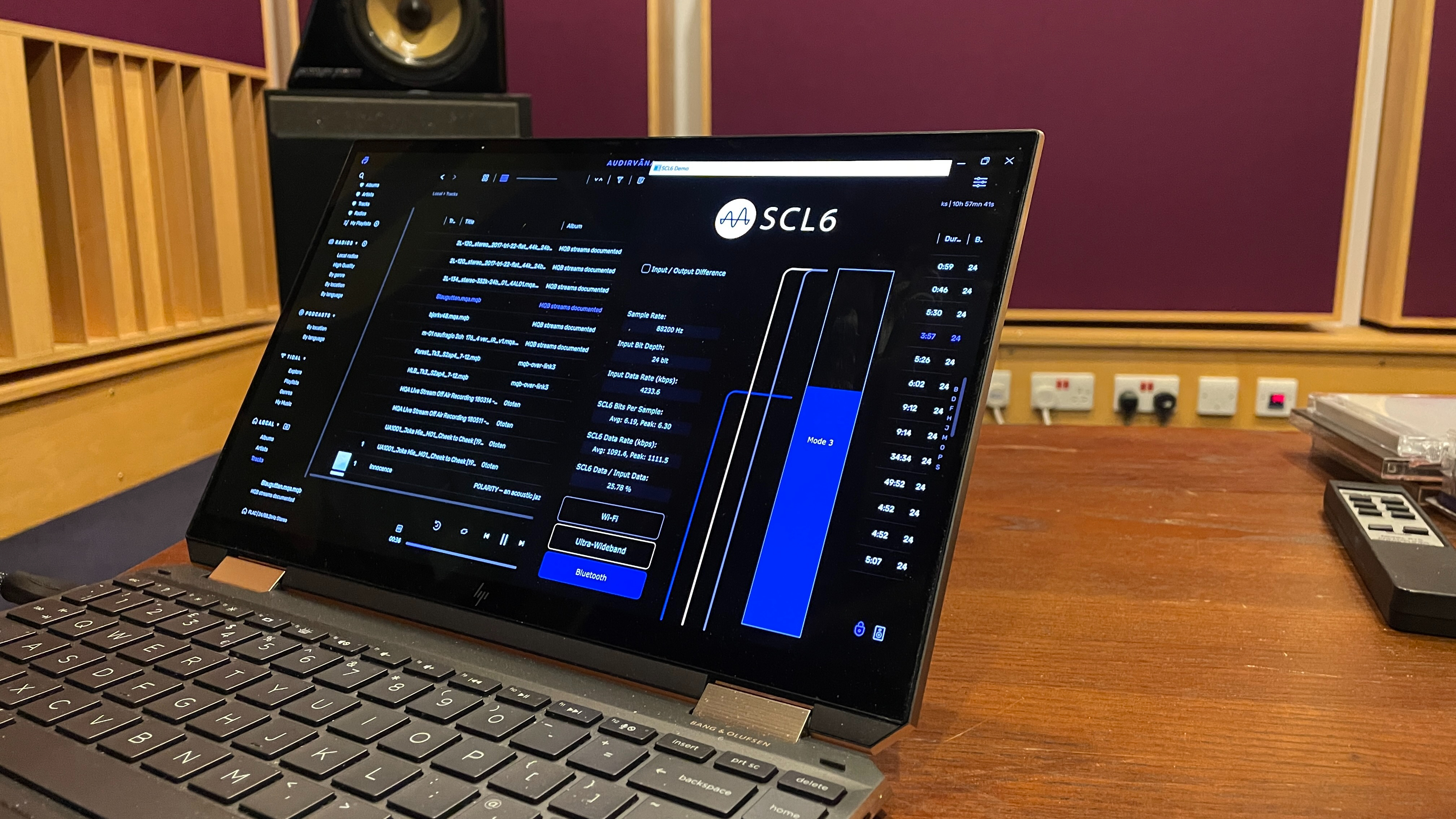Here's how the ultimate hi-res wireless audio experience could be just a few years away
It won't be long until we can stream at maximum quality on phones and wireless headphones, according to one key audio chip manufacturer

Next-generation wireless headphones and mobile devices will be able to deliver significantly improved, scalable, hi-res audio in “the next few years,” according to one of the biggest chipmakers in the industry.
Qualcomm vice president of mixed signal solutions and wearables, Dino Bekis, said the brand’s Expanded Personal Area Network (XPAN) technology will be able to deliver fully scalable, 24-bit/192kHz audio wirelessly to headphones "soon", during an interview with What Hi-Fi?.
“We're very committed to developing wi-fi and Bluetooth. We believe that that gives us the necessary headroom we need to get to the 24-bit/192kHz lossless,” he said.
“When can we achieve that? It’s important that we can not only achieve the data rate, but then offer the scalability aspects as well. So I think it's a natural evolution from what we're doing today. The core technologies we've built on top of right, allow us to get there. So, yeah, I'd say give it a few years and we’ll deliver it.”
Bluetooth is currently universally used for wireless headphones. But the technology has limited bandwidth so it cannot deliver hi-res audio without a lot of compression.
This is a key reason why new technologies – over wi-fi – are being explored (such as XPAN) to work alongside Bluetooth in a hybrid fashion to offer better quality when in wi-fi environments.
The figures quoted by Bekis are a significant improvement on the current Bluetooth codecs commonly used by wireless headphones.
Get the What Hi-Fi? Newsletter
The latest hi-fi, home cinema and tech news, reviews, buying advice and deals, direct to your inbox.
Apple's AAC taps out at 24-bit/44.1kHz audio files, with a bitrate of up to 320kbps, while Qualcomm's aptX HD tech offers 24-bit/48kHz at 576kbps and Sony's LDAC offers up to 32-bit/96kHz at 990kbps over Bluetooth, for example.
If paired with well-tuned headphones and a solid source, Qualcomm's new XPAN solution could lead to significantly improved audio, especially when streaming over a solid wi-fi connection, if the claims prove true.
This will largely depend on the specific hardware and implementation, however. The firm unveiled its first wi-fi headphone chip alongside partner Xiaomi’s Buds 5 Pro wi-fi earbuds in March. The Buds 5 Pro are the first earbuds we have seen using XPAN.
We haven’t had a chance to test the hardware yet, but Qualcomm quotes it as offering 24-bit/96kHz lossless audio at a bandwidth of up to 4.2Mbps. This is double the speed that Bluetooth 5.0 can handle.
Bekis added that the platform will offer complete scalability, letting it adjust the quality of the stream depending on its network conditions, both over Bluetooth and wi-fi.
“We can go from a very low resolution on Bluetooth with a basic codec all the way up to 24-bit/96kHz based on the conditions,” he explained.
“The codec will modulate and scale up, or scale down. [It will] really be looking for the best, sustained quality that you can take and run over the existing network connection or conditions.”
Bekis confirmed this includes when switching between different wi-fi networks and even when having to switch to slower 4G, or even 3G, network connections. He added it will also do this “without radically spiking" your power consumption and draining your battery.
Other companies are trying to do this too

Qualcomm is one of many companies working on higher quality, scalable codecs for wireless headphones.
MQA’s Airia transmission codec, which is the latest version of the SCL6 prototype codec we heard in 2022, aims to offer similar scalability and power efficiency.
The codec is designed to be “technologically agnostic” and will let listeners stream PCM/FLAC or MQA formats wirelessly. MQA’s parent company, Lenbrook, has already secured a partnership with hi-res streaming service HDTracks to use the technology.
Bekis clarified that Qualcomm will be able to achieve the highest quality available only when future wireless headphones with its technology are connected to a compatible device running a high enough resolution streaming service.
Currently, there are only a select few services that offer 24-bit/192kHz streams. We currently recommend Tidal, Apple Music and Qobuz in our best music streaming services guide in part due to the functionality.
Spotify is expected to launch a new Spotify HiFi tier that adds 24-bit hi-res streaming, but currently caps at 16-bit CD quality.
When asked about what’s next, Bekis flagged two things to look out for in the future from Qualcomm.
The first is a potential move into streaming “dongles” designed to add XPAN and Snapdragon Audio (the name for its entire sound platform) to older devices.
“We want to unleash the power of our audio to a much broader set of endpoints. We want to expand the limits of existing source devices, maybe with a dongle or something of that nature and let people use them to transmit with high fidelity to older endpoint devices.”
The second are wider improvements to wi-fi and Bluetooth, which could potentially allow for even higher bitrate streams and significant improvements to general network stability.
“There's plenty of headroom in wi-fi and Bluetooth. There’s a new version of Bluetooth coming. It’s called high data throughput (HDT), and that's going to have a standard approach to being able to deliver lossless CD quality," he said as an example.
“And when you look at wi-fi, it is already a very scalable technology that's ubiquitous and everywhere. What place doesn't have wi-fi? As this grows, we’ll be able to take advantage of existing infrastructure, existing capabilities, and all these source devices much more.”
He added that Qualcomm will announce new headphone and earbud partners set to use its existing wi-fi chips “very soon”.
Are you excited about Qualcomm's performance claims? Let us know in the comments below, on our forums, or on social media!
MORE:
These are the best music streamers we have reviewed
Our picks of the best phones for music
We rate the best wireless headphones

Alastair is What Hi-Fi?’s editor in chief. He has well over a decade’s experience as a journalist working in both B2C and B2B press. During this time he’s covered everything from the launch of the first Amazon Echo to government cyber security policy. Prior to joining What Hi-Fi? he served as Trusted Reviews’ editor-in-chief. Outside of tech, he has a Masters from King’s College London in Ethics and the Philosophy of Religion, is an enthusiastic, but untalented, guitar player and runs a webcomic in his spare time.
You must confirm your public display name before commenting
Please logout and then login again, you will then be prompted to enter your display name.